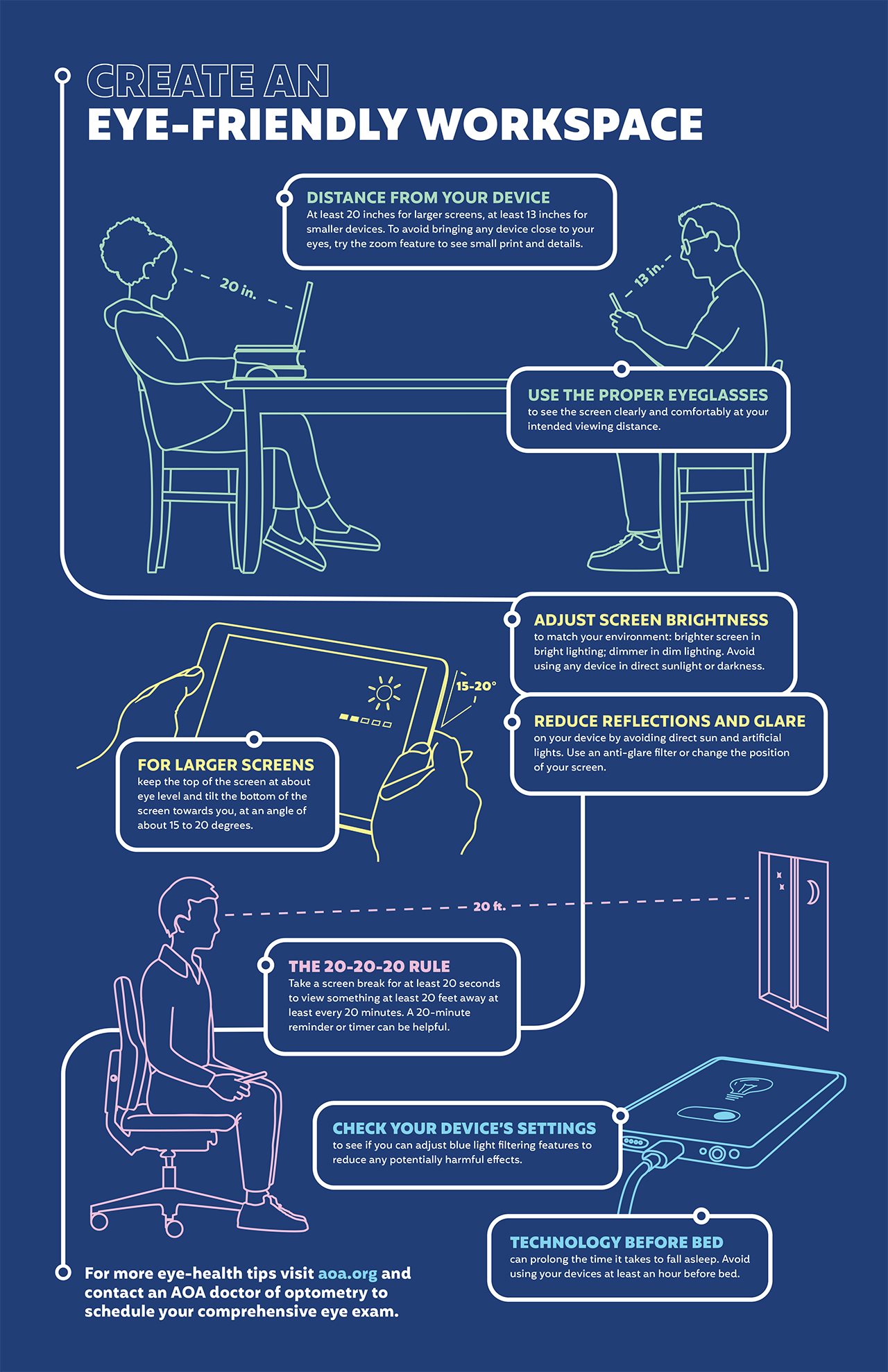
(BPT) - As digital device use has increased significantly in recent years, so has the risk that our daily habits may have an impact on our vision. According to the American Optometric Association (AOA), more than 16 million Americans struggle with undiagnosed or untreated vision impairments, many of which could have been detected during a comprehensive eye exam.
Every day, doctors of optometry examine patients with no symptoms and find serious eye and other health issues. While some vision impairments are related to diseases like diabetes and sexually transmitted infections, some are caused by habits that make your eyes work harder, causing eyestrain, headaches, dry eyes and blurred vision.
Check out these five common eye health mistakes and how to implement better vision habits into your daily routine.
1. Improper desk setup and lighting
Your workspace can have a big impact on your eye health. Whether you work from home or go into the office, you'll want to evaluate your desk setup and lighting.
Your desk and chair should be set up so the top of your computer screen is no higher than eye level, with the screen angled away about 15 to 20 degrees. If you have a standing desk, make sure to appropriately adjust it similarly to how you would look at your screen when seated.
Also, differences in lighting can cause undue stress on your eyes. Keep room lighting to about the same as the brightness of your computer screen, not significantly brighter or dimmer.
2. Not blinking enough during the day
Chances are you probably don't think about how often you blink. However, people tend to blink less frequently when viewing a computer screen or handheld digital device. In fact, blink rate slows by up to 40% when you're looking at a screen.
Blinking is the eye's way of getting the moisture it needs on its surface. Keeping a note on your desk is a good way of reminding you to blink as a natural way to help prevent dryness and irritation. Practicing the 20-20-20 rule can help prevent vision issues such as digital eye strain as well: every 20 minutes, look at something 20 feet away for 20 seconds.
3. Holding your phone too close to your face
While you might be tempted to hold your phone close to your face to read small text or view images and videos, bringing the device closer to your eyes taxes the visual system. Keep in mind that small screens should be held at least 13 inches away from your face. If you need to read small print or see details, use the zoom feature or increase the text size in your device's settings.
4. Wearing improper eyeglasses
If you find yourself squinting when driving, reading or watching TV, it may be time to get glasses or change your eyewear. Speak to your doctor of optometry to ensure you're wearing the correct prescription and type of glasses for your intended viewing distance. They may also ask about your habits and recommend different pairs of glasses for certain activities, such as driving glasses or a pair with anti-glare coating for screen time.
5. Skipping your annual comprehensive eye exam
Annual comprehensive eye exams by a doctor of optometry are essential to ensure not only healthy eyes, but that your whole-body health is in check.
These exams can help identify the signs and symptoms associated with 270+ diseases that span the whole body. The earlier a vision or health problem is detected and treated, the more likely treatment will be successful.
"For many people, vision is their most important sense," said Dr. Robert C. Layman, AOA President. "It connects us to our surroundings and the people in our lives. However, people are often unaware of habits that can strain their vision. The best way to assess and protect your vision and eye health is to receive a comprehensive eye exam annually, because the in-person care that AOA doctors of optometry deliver is irreplaceable."
By avoiding these five common eye health mistakes, you can take better care of your vision and overall health. To learn more about eye health in this digital world and find an AOA doctor near you, visit AOA.org.


